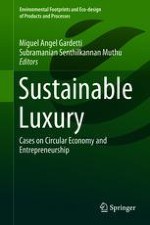2019 | OriginalPaper | Buchkapitel
Sadhu—On the Pathway of Luxury Sustainable Circular Value Model
verfasst von : Sheetal Jain, Sita Mishra
Erschienen in: Sustainable Luxury
Verlag: Springer Singapore
Aktivieren Sie unsere intelligente Suche, um passende Fachinhalte oder Patente zu finden.
Wählen Sie Textabschnitte aus um mit Künstlicher Intelligenz passenden Patente zu finden. powered by
Markieren Sie Textabschnitte, um KI-gestützt weitere passende Inhalte zu finden. powered by
